When was the last time you made art, just for yourself? This lingering question inspired me to bring a sketchbook along on a kayak trip. In my busy life as a professional graphic designer, it’s hard to carve out the time for my own art practice. As an avid sea kayaker, it was time to bring together my two great loves.
Why Paint in the Field?
Sea kayaking can take you to the most magical coastal landscapes. While I love scampering over rocky bluffs to frame the perfect photo, there’s something special about settling in to paint a scene. Taking the time to reflect on my surroundings and noting the colours, textures, and shapes ingrains a deep sense of place in my memory. Later I can flip back through my sketchbook and recall sitting perched against a log, nestled into loose gravel, listening to distant gusts of wind. Back at home, these little details bring the memory to life.
On the more practical side, watercolour paints provide endless hours of enjoyment, especially during stormy days stranded on the beach. Compact enough to fit in a small dry bag, my ‘bag of art’ now comes along on every multi-day trip.
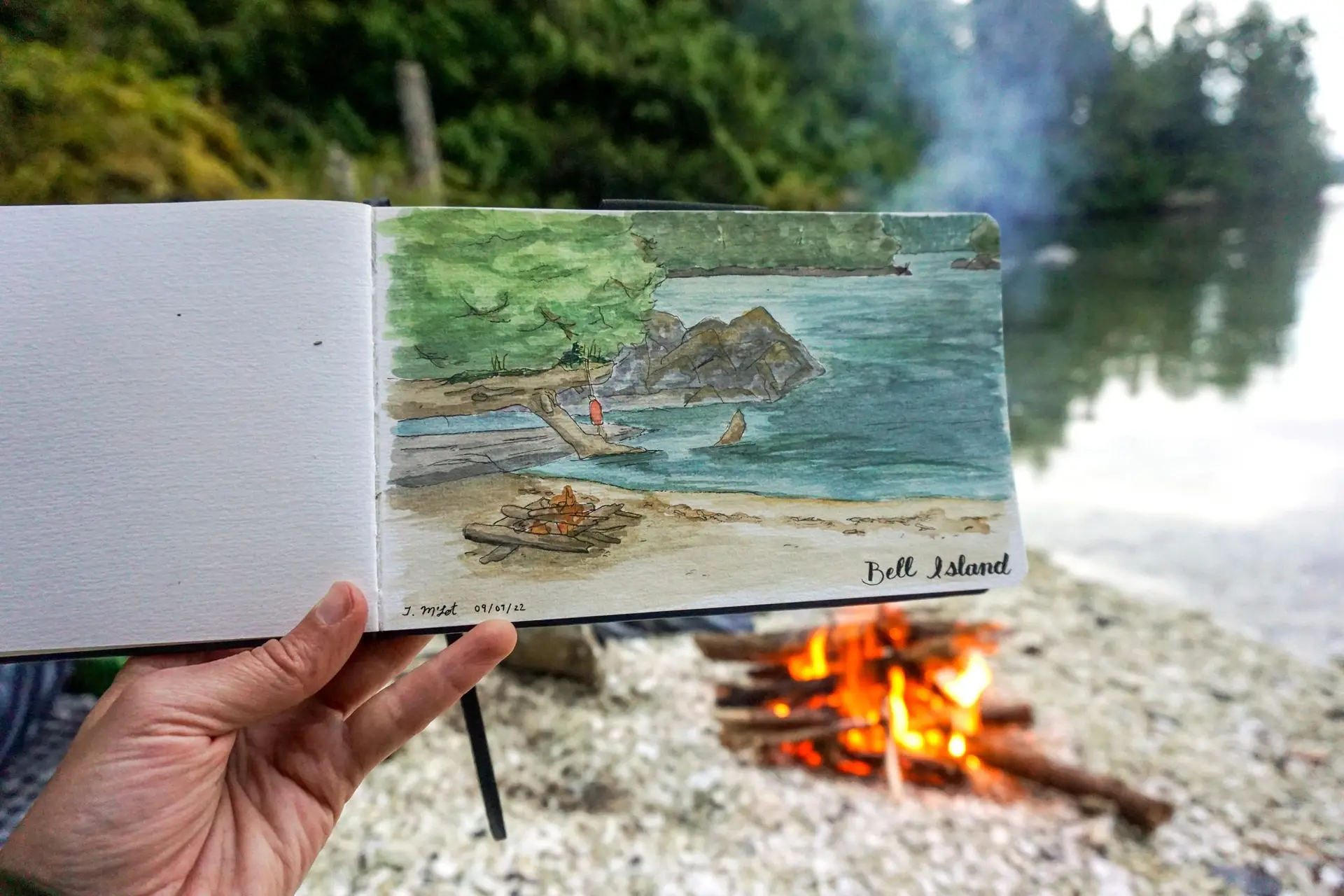
Materials in my Kit
- Watercolour travel set (check out a wide variety of options at Opus, Michaels, or your local art shop)
- Watercolour paint brushes
- Black fine-tipped pen
- Pencil and eraser
- Watercolour sketchbook (an 8.5” x 5” sketchbook fits nicely in the dry bag)
- Small water jar
- Small rag
- 5-litre dry bag to hold everything
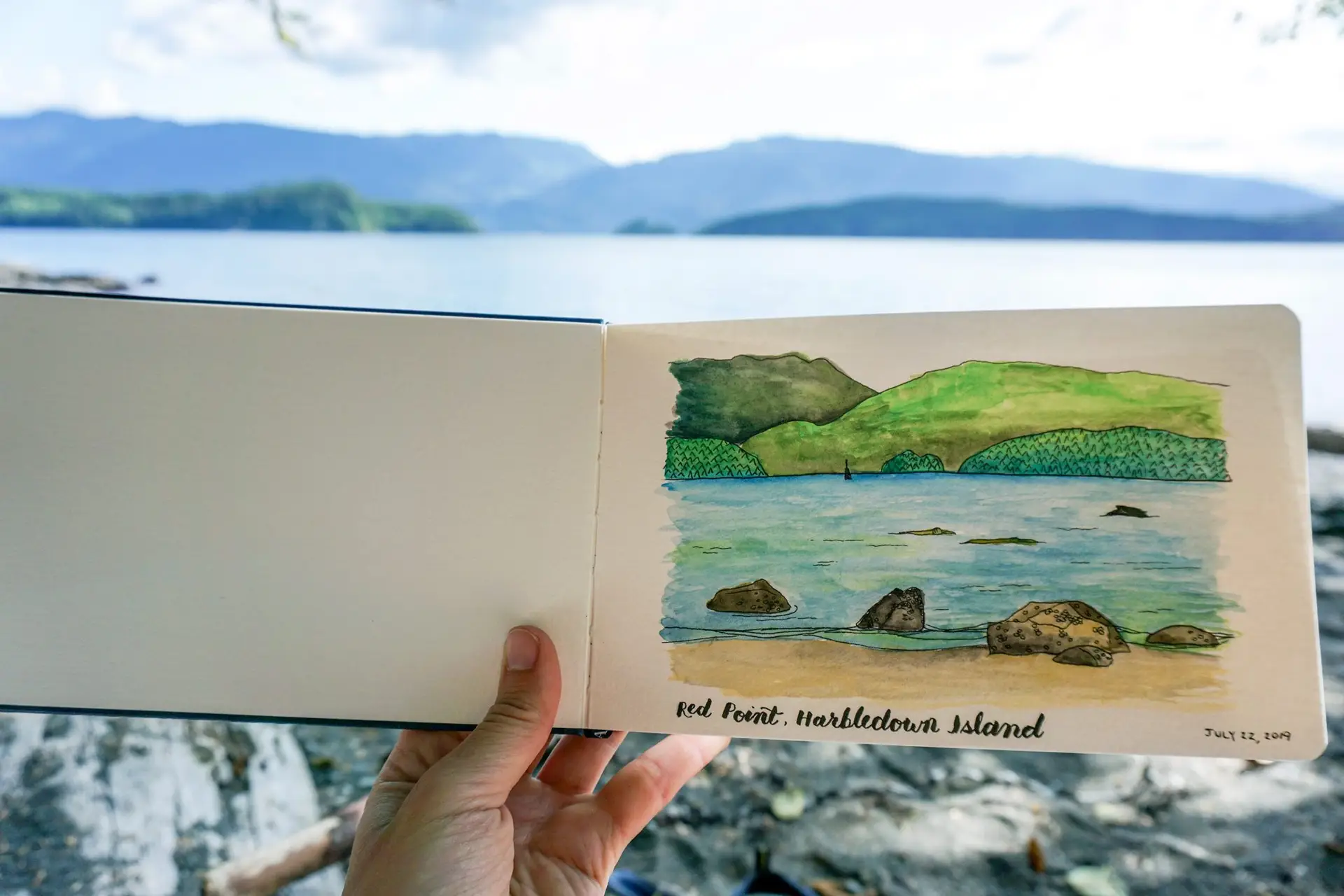
My Process
My favourite time to paint is late afternoon – the kilometers have been logged, the camp has been set up, and it’s time to relax. I start by drawing a loose pencil sketch to capture the scene and often trace over this with a black pen. With many ocean vistas, the tide can change while I am at work, and I find the initial sketch helps solidify my direction and provides a foundation if I cannot finish in the time available.
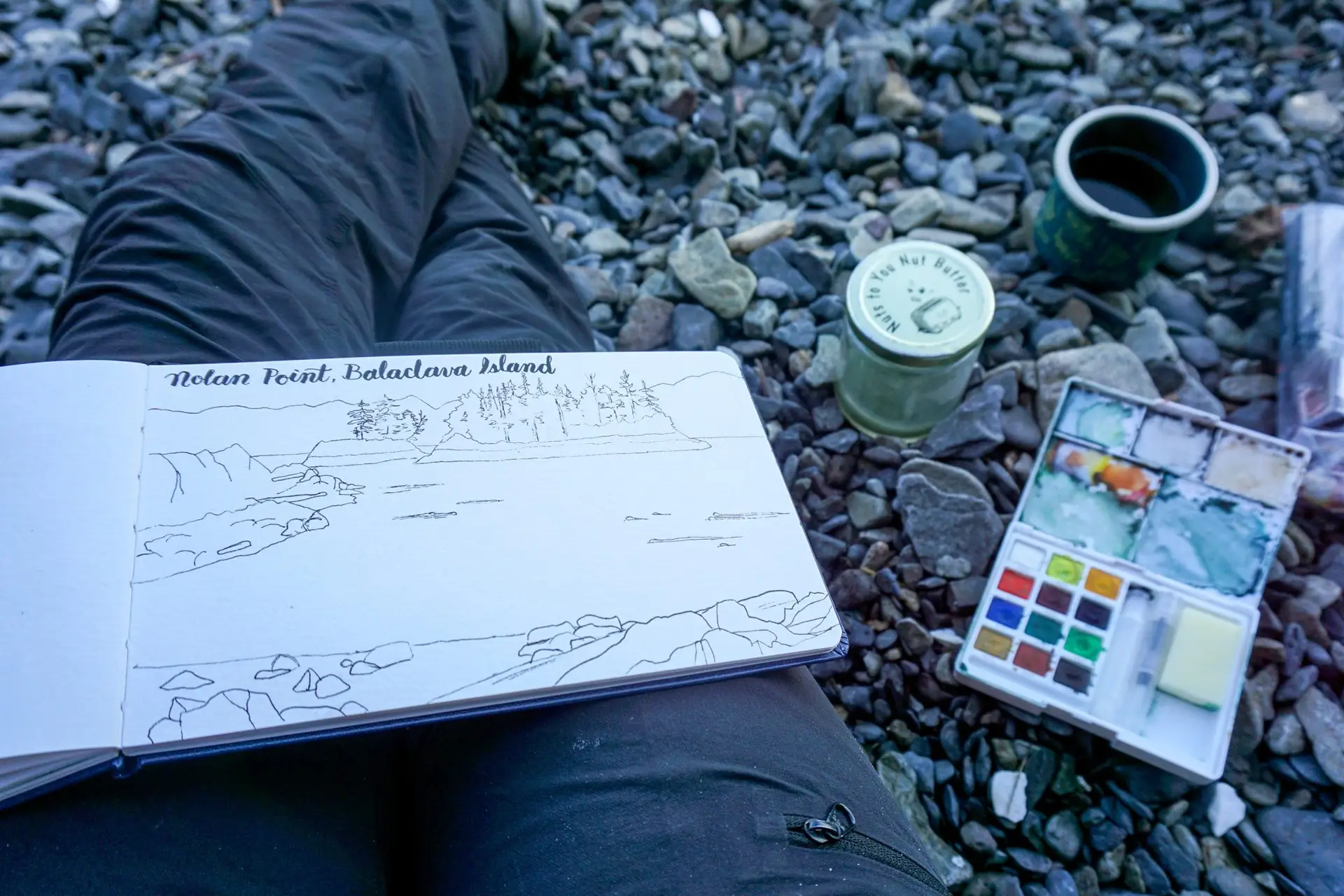
After sketching, the paints come out. I pour a little fresh water from my water bottle into the small jar. This jar holds my accumulated painting water for the whole trip, to avoid pouring dirty paint-water into the ocean. It can become a little murky, but I just add fresh water as needed and embrace the creative restrictions that come with painting on a multi-day trip.
While painting, my focus is on enjoying the process and the moment. I find it easy to get caught up in perfection but try to remember all the reasons I am out here, none of which include comparison or unworthiness. After I finish painting, I rinse the brushes and pat dry with the rag; then the sketchbook and brushes are left to dry. Time to revel in the joy of my creation!
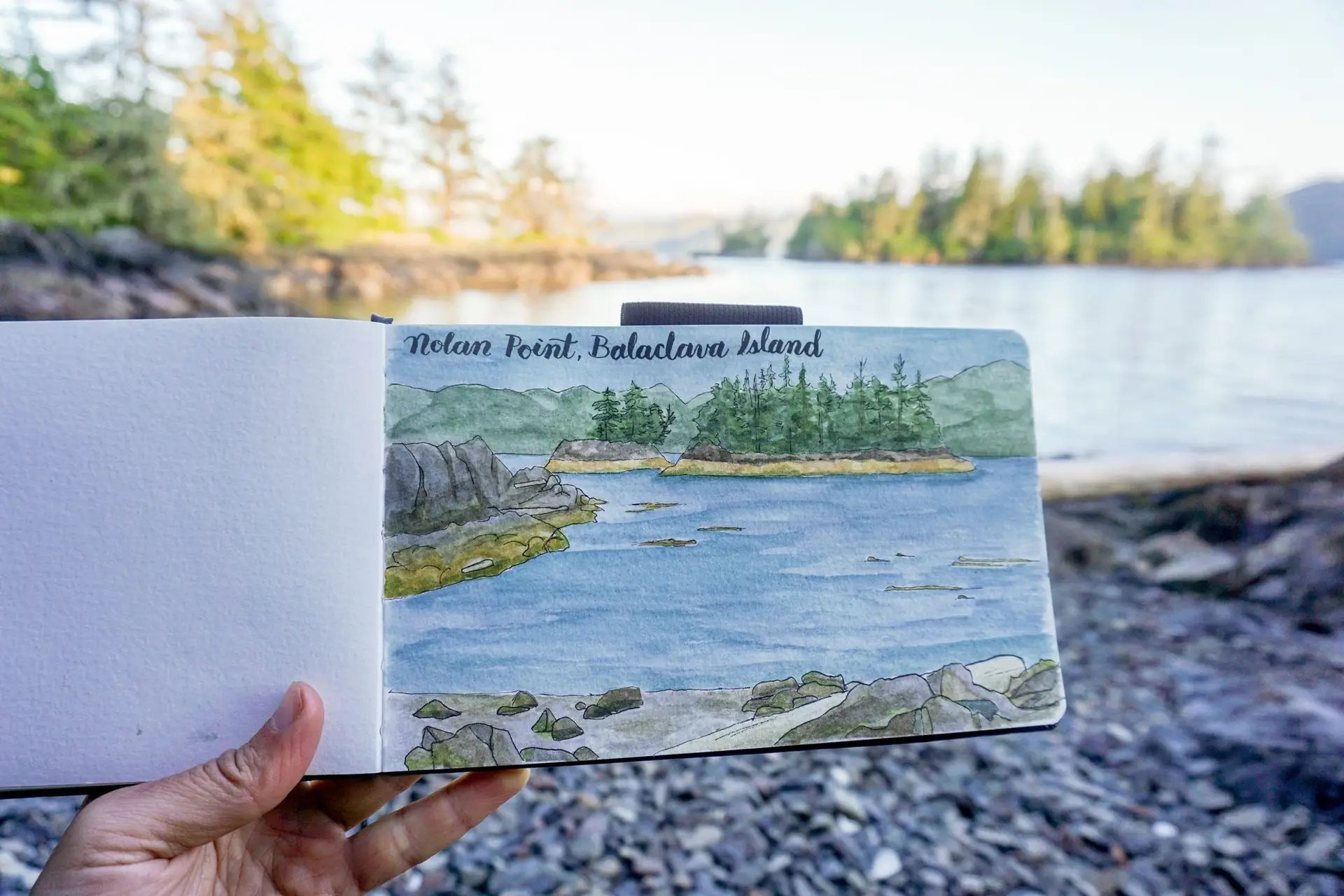
Back Home
At home, I love flipping back through the memories of campsites, beaches, and vistas and sharing with friends and family. As there is never a shortage of beautiful scenery on these trips, I also return home with many photos on my camera and phone, which can become inspiration for home-based paintings.
If creating art has ever piqued your interest, I encourage you to pick up a sketchbook and watercolour paints for your next paddling trip. Being away from the confines of life’s routines provides new opportunities for creativity to flourish, limitations to lift, and a new type of memory to be made.
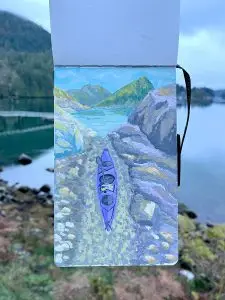
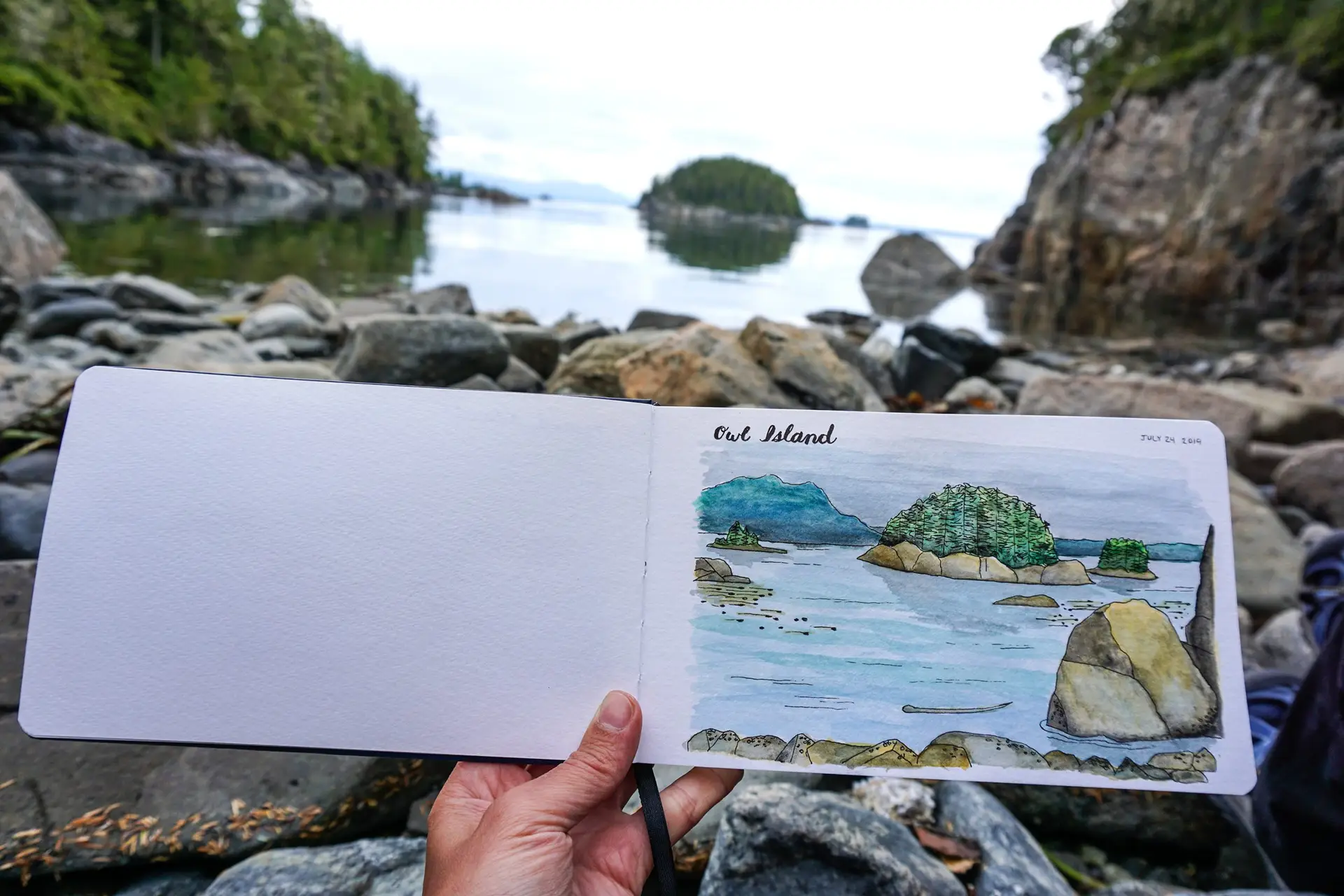
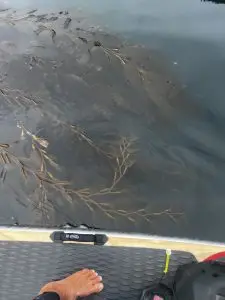
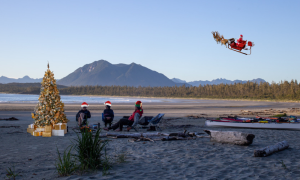
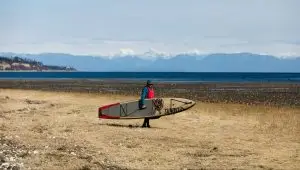
Hi Ken, thank you for your kind words! I haven’t tried painting with sea water yet – I’m sure it would create some interesting results with the salt at play. I use freshwater that I keep in a separate container.
I really like how well you explained watercolor work in the field. Do you use seawater?